In 1970, the writer Giuseppe Raimondi recalled a visit he had made to Giorgio Morandi in Bologna, more than half a century before. Morandi, then in his late twenties, opened a small, cheaply printed book about El Greco – ‘the kind where the reproductions of large paintings have roughly the size of slightly magnified postage stamps’ – and gestured towards the bottom of ‘an Assumption or Annunciation’, in which the point of an angel’s departure from earth is marked by a group of pink roses. ‘If you could see,’ Morandi said to Raimondi, ‘what these flowers are. No modern painter has painted flowers like these.’
At the Guggenheim Bilbao, El Greco’s work appears as a small reproduction, printed on the wall in what is the first exhibition to focus on how Morandi was influenced by the paintings of the Old Masters. In some respects it does feel more like a first attempt than the finished article: none of those painters who ‘most interest[ed]’ Morandi – ‘Giotto and Masaccio above all’, and from more recent times ‘Corot, Courbet, Fattori and Cézanne’ – crop up here. Instead, just over 50 oils and works on paper by Morandi, spread across three modest rooms, are interspersed with a smattering of paintings by Zurbarán and other painters of the Spanish Golden Age, by Giuseppe Maria Crespi and other Italian artists, and by Chardin. Among these, Chardin is the only artist whom Morandi cited repeatedly as an influence; the curators have justified their focus on the others by invoking the art historian Roberto Longhi, a close friend of Morandi, who was instrumental in reviving interest in both Spanish and Bolognese art for a modern audience.

Still Life (Natura Morta) (1920), Giorgio Morandi. Photo: © Giorgio Morandi, VEGAP, Bilbao, 2019
Seen in another light, however, the omissions are strangely apt. From 1909, when he was 19, until his death in 1964, Morandi lived on the same street in Bologna, in a small flat that he shared with his mother, three unmarried sisters, and the cast of boxes, glasses, bottles and fluted vases, each coated in a layer of matt paint and a veneer of dust, that are the protagonists of hundreds of muted, contemplative paintings, completed over the course of more than four decades. Morandi travelled beyond Italy only twice, and not until he was past 60. He occasionally visited Italian museums, but by and large this intensely private artist looked at the art of the past through reproductions in books and journals. Accordingly, what caught Raimondi’s interest was not the way in which El Greco had painted those flowers, but the fact that Morandi had been able to glean so much, ‘with the powerful magnifying glass of his eye’, from what seemed so little.
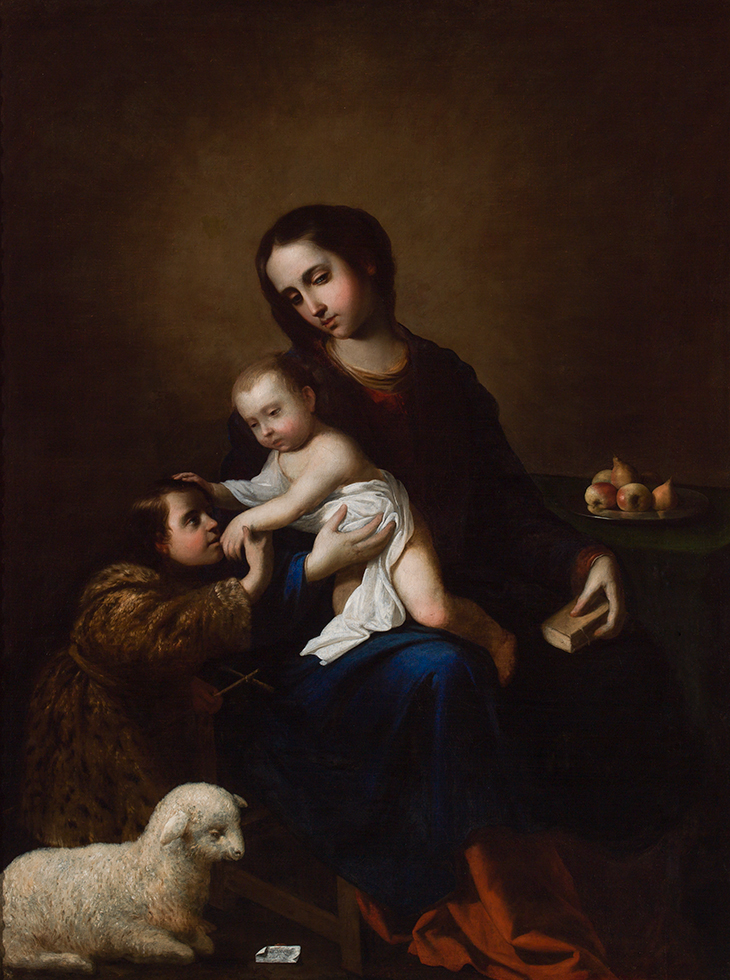
The Virgin and Child with the Infant Saint John the Baptist (1662), Francisco de Zurbarán. Photo: © Giorgio Morandi, VEGAP, Bilbao, 2019
The exhibition works best as a kind of meditation on how Morandi looked at art. It opens with a work by Francisco de Zurbarán, in which Mary, the infant Jesus, and John the Baptist appear against a dull brown background, swathed in a faint, numinous light. On a table to the right of the figures, behind the Madonna’s arm, there is a pewter plate loaded with apples and pears, which gleam with a light that seems far brighter than that which falls around them. In an early still life of 1921 by Morandi shown nearby, the effect seems to be reversed – the bottles and vases assembled on the table are cast in shadow, rendered in murky browns and blues, compared with which the umber background appears to flicker as though by candlelight.
In the second room are three small works by Giuseppe Maria Crespi, formerly owned by Morandi. He remarked in 1960 of his pleasure at ‘being able to study at my ease, in complete privacy, a sample, however small, of the work of an artist whom I revere’. Crespi’s Mary Magdalene (c. 1700) is brought to life by the luminous quality of the drapery; in Morandi’s Still Life with Yellow Rag (1929), the cloth that hangs down from the table casts what seems an impossibly broad and dark shadow, propelling it forward from the picture plane towards the viewer.
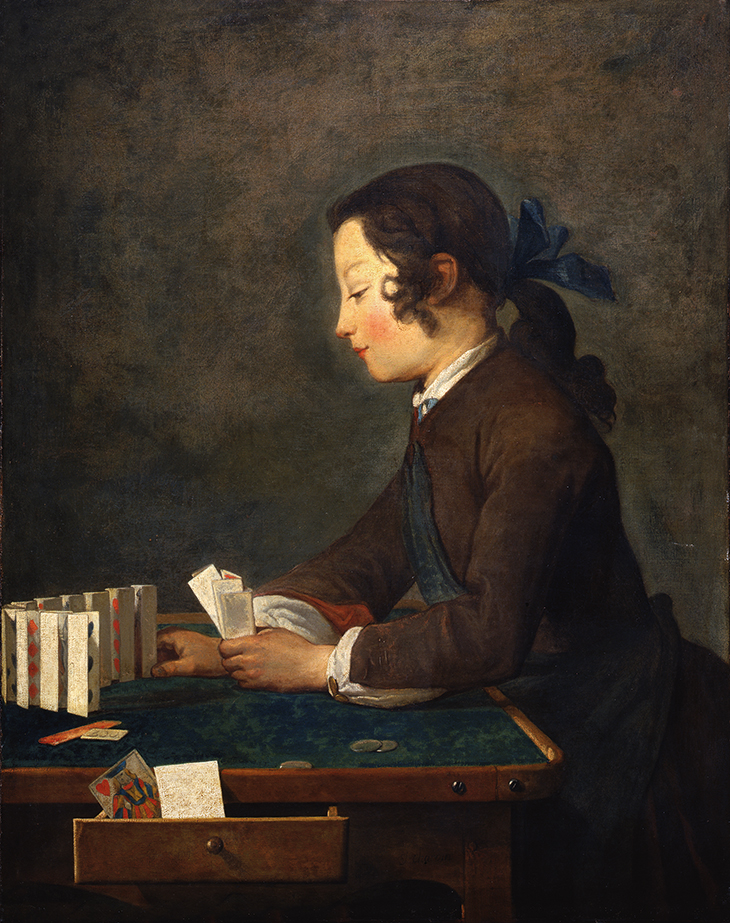
The House of Cards (Le Château de cartes) (n.d.), Jean-Baptiste Siméon Chardin. Gallerie degli Uffizi, Florence
For Morandi, the study of art could ‘offer us an answer to our questions’ – but only ‘if we formulate these properly’. By encouraging viewers to home in on small details, the exhibition provides a sense of how Morandi went about scrutinising the master paintings he encountered. One of Morandi’s two excursions beyond the borders of Italy took him to Winterthur in 1956, where he had work in an exhibition at the Kunstmuseum. Here he saw several paintings from the Oskar Reinhart collection, including two by Chardin, previously known to him only from photographs; according to the director of the museum, he was particularly impressed by Chardin’s treatment of the playing cards on the table of Young Man Building a House of Cards (after 1735). In two other versions of this subject that are on display in the final room, Chardin’s nuanced tonal variation of creams and greys gives the cards a sense of volume and presence that belies their actual flatness and flimsiness. Near these paintings hang three still lifes by Morandi dating from the year of his visit, which reveal, perhaps, what he learned from studying Chardin up close. In each, tightly packed groups of boxes are depicted front-on, flattening the perspective. Behind the central box, painted in a dull shade of cream, is a glass bottle of the same colour and the same width. Squint, and they merge into one flat shape – but pay attention to the patches of dark shadow on the neck of the bottle and the top of the box, and the scene takes on a powerful illusion of depth.
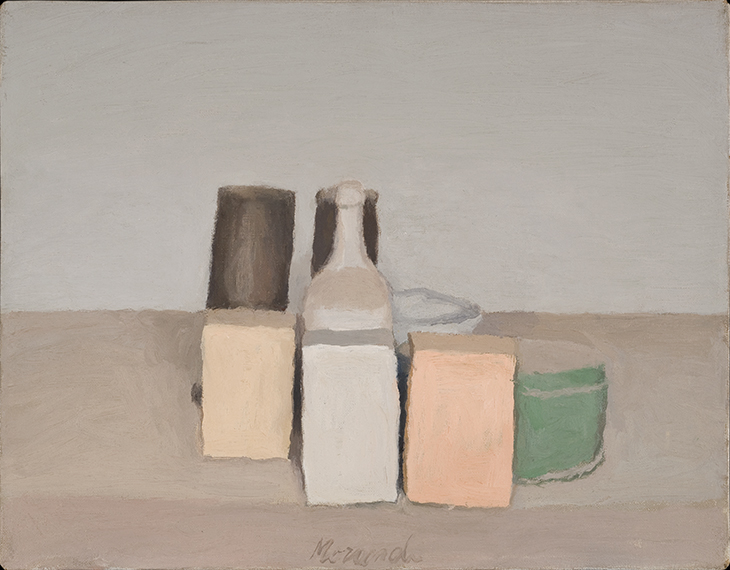
Still Life (Natura Morta) (1956), Giorgio Morandi. Photo: © Giorgio Morandi, VEGAP, Bilbao, 2019
Yet even here, the manner in which Morandi was looking at Chardin remains something of a mystery. We do not know whether these paintings were completed after the trip to Switzerland, or before. Perhaps Morandi learned what he needed from Chardin simply by looking at the blurry, black-and-white photographs that illustrated his much-loved copy of André De Ridder’s 1932 monograph on the artist, from which he cut out favourite plates to tack to his studio wall.
‘A Backward Glance: Giorgio Morandi and the Old Masters’ is at the Guggenheim Bilbao until 6 October.
From the June 2019 issue of Apollo. Preview the current issue and subscribe here.
Unlimited access from just $16 every 3 months
Subscribe to get unlimited and exclusive access to the top art stories, interviews and exhibition reviews.

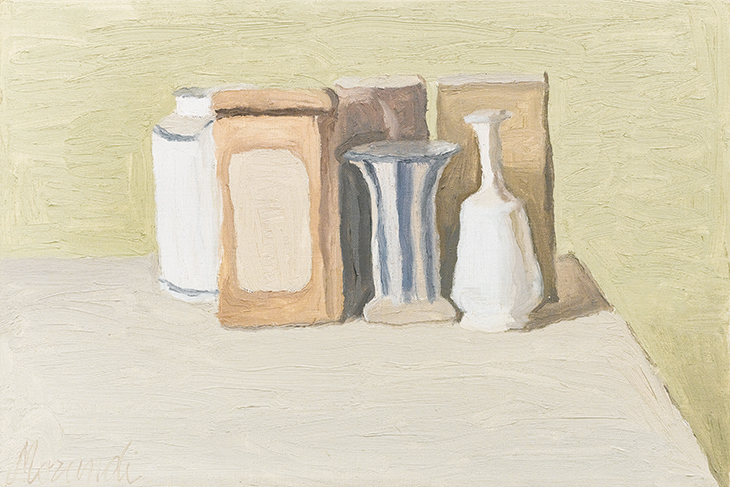
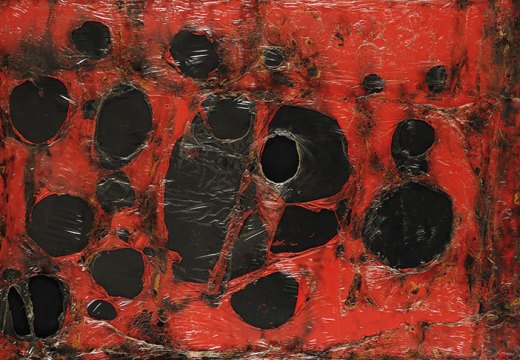
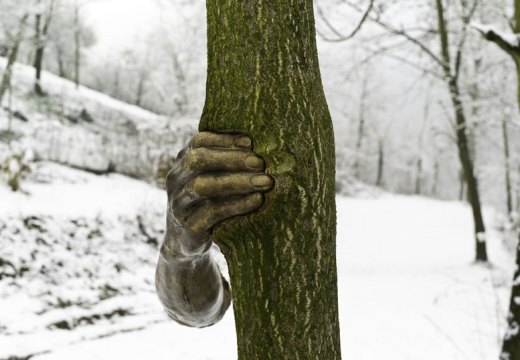
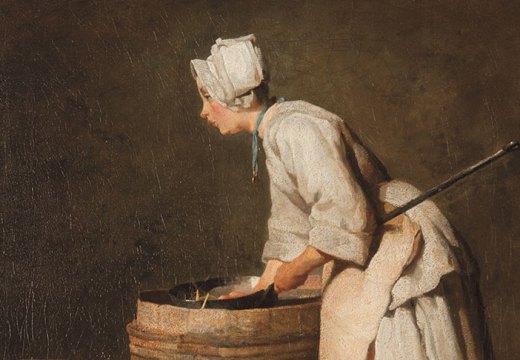









![Masterpiece [Re]discovery 2022. Photo: Ben Fisher Photography, courtesy of Masterpiece London](http://www.apollo-magazine.com/wp-content/uploads/2022/07/MPL2022_4263.jpg)
It’s time for the government of London to return to its rightful home